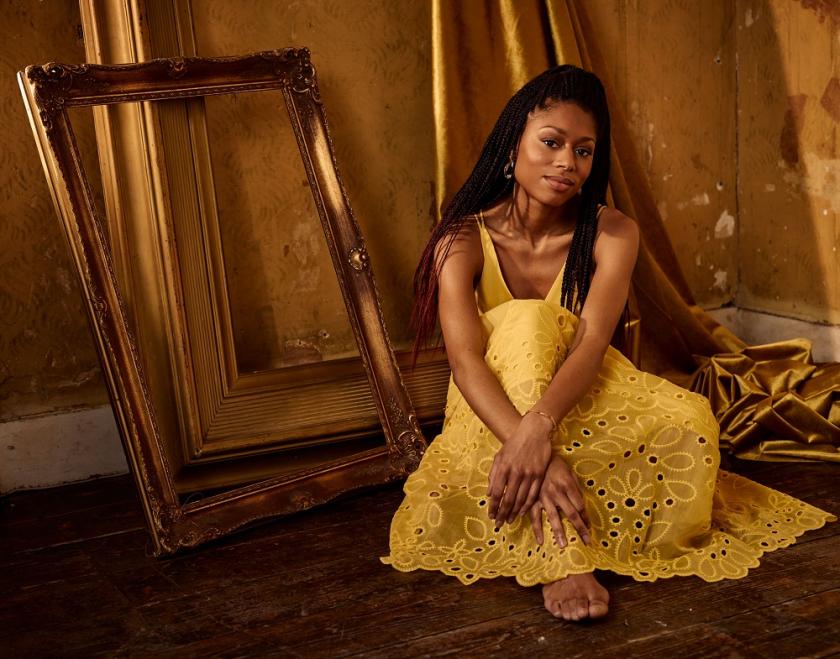My entire childhood was punctuated with music. I just can’t remember a time without it being present and I think it’s shaped me enormously. I have varying pieces of music for the different times in my life and they all evoke very powerful memories for me.
As a child I used music as an escape: I had a very vivid imagination and listening to music was like entering a new world. When I perform music now, I want to bring the audience into the world of that music. to feel and view the music in the same way that I do. This affected the choice of repertoire on the album because it was important that it was music I felt connected to, and that had transported me in some way as a child and as an adult.
When I was young, my musical inspirations were Martha Argerich, Jacqueline du Pré, and Rachmaninov (both his playing and his compositions). The inspiration came from their ability to convey their passion for the music through these amazing sound worlds that they were able to create via their playing.
 The album grew around Dohnányi 's Variations on a Nursery Song as I heard it live in concert and decided that it was something I really wanted to record. I loved its humour and the fact it’s such a brazen composition and as an audience member, I found that incredibly exciting. And then Mozart's Variations on “Ah vous dirai-je, maman" joined, partly because I liked the symmetry of it being based around the same theme and partly because I played it as a child. I also played part of Debussy's Children's Corner Suite when I was young, and I fell in love with the Kinderszenen as an adult. All the works express childhood in different ways and it does feel like my most personal album to date because it links both my young and now adult musical lives. Some of these pieces evoke nostalgia for me and hopefully they have featured in the lives of many of the listeners as well.
The album grew around Dohnányi 's Variations on a Nursery Song as I heard it live in concert and decided that it was something I really wanted to record. I loved its humour and the fact it’s such a brazen composition and as an audience member, I found that incredibly exciting. And then Mozart's Variations on “Ah vous dirai-je, maman" joined, partly because I liked the symmetry of it being based around the same theme and partly because I played it as a child. I also played part of Debussy's Children's Corner Suite when I was young, and I fell in love with the Kinderszenen as an adult. All the works express childhood in different ways and it does feel like my most personal album to date because it links both my young and now adult musical lives. Some of these pieces evoke nostalgia for me and hopefully they have featured in the lives of many of the listeners as well.
The first piece of music I remember connecting with is Schubert's "Trout" Quintet. I loved it because we watched a documentary of Zubin Mehta, Itzhak Perlman, Daniel Barenboim, Pinchas Zukerman and Jacqueline du Pré playing it. What struck me the most about this film was the amount of fun the musicians were having while rehearsing the piece and backstage before the concert. Watching this documentary really brought the music to life and was inspirational to me as a seven-year-old.
The more I play any piece, the more freedom of expression I can bring to the performance. This is especially true of the Dohnányi because it’s a piece that really thrives on spontaneity. With the Mozart, I’m not sure how much my interpretation has changed over the years but as my knowledge and technique have developed, I’m able to express more of the feelings I have about the piece. During the recording process of this album, I particularly loved the Dohnányi because I got to work with Domingo Hindoyan and the RLPO again. I think the biggest challenges on the album were some of the more “simple’ movements in the Schumann and Debussy because there are fewer notes and I felt I wanted to bring a huge amount of detail into what was there.
In terms of what I’d like people to take away from the album, I would hope that those who haven’t heard the Dohnányi before can enjoy it as much as I do and that they revisit some pieces that they may have loved for years. Who knows, perhaps it might even inspire some lapsed pianists to sit down again and play?














Add comment